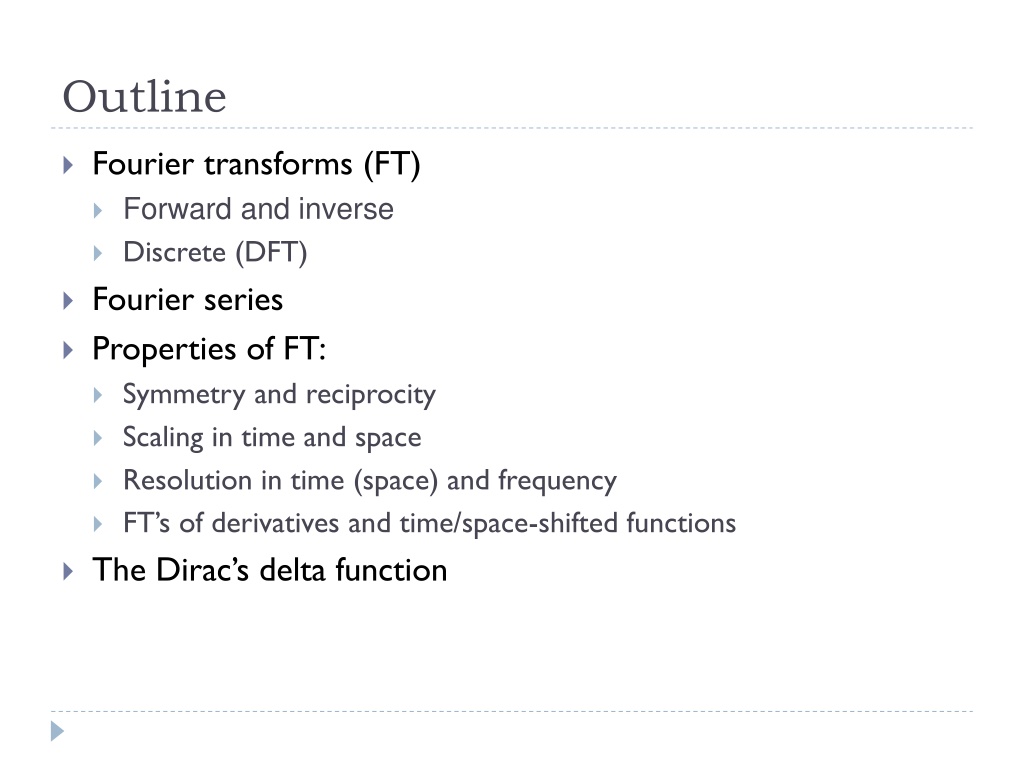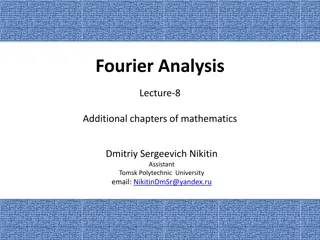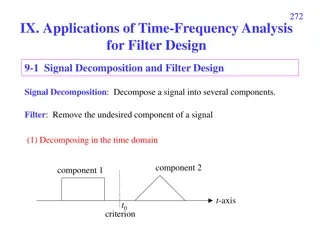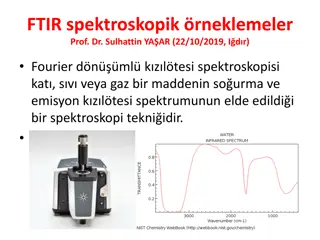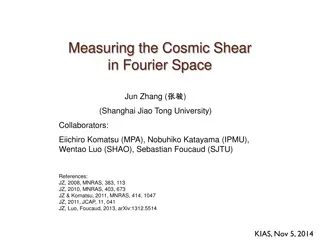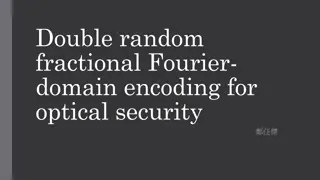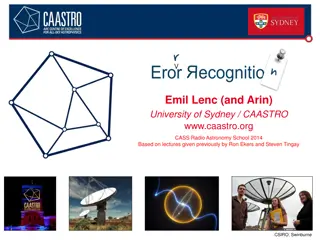Fourier Transforms and Properties
Fourier transforms play a crucial role in signal processing by transforming signals between time and frequency domains. This outline covers the basics of Fourier transforms, discrete Fourier transforms, Fourier series, properties like symmetry and reciprocity, resolution in time and frequency, the Dirac delta function, sin/cos or exp forms, and the time-frequency uncertainty relation.
Download Presentation

Please find below an Image/Link to download the presentation.
The content on the website is provided AS IS for your information and personal use only. It may not be sold, licensed, or shared on other websites without obtaining consent from the author.If you encounter any issues during the download, it is possible that the publisher has removed the file from their server.
You are allowed to download the files provided on this website for personal or commercial use, subject to the condition that they are used lawfully. All files are the property of their respective owners.
The content on the website is provided AS IS for your information and personal use only. It may not be sold, licensed, or shared on other websites without obtaining consent from the author.
E N D
Presentation Transcript
Outline Fourier transforms (FT) Forward and inverse Discrete (DFT) Fourier series Properties of FT: Symmetry and reciprocity Scaling in time and space Resolution in time (space) and frequency FT s of derivatives and time/space-shifted functions The Dirac s delta function
Sin/cos() or exp() forms of Fourier series Note that the cos() and sin() basis in Fourier series can be replaced with a basis of complex exponential functions of positive and negative frequencies: ( ) ( ) + + inx inx cos sin a nx b nx e e n n n n + a ib a a ib , , and 0 n n n n where: 0 n n 2 2 2 The einx functions also form an orthogonal basis for all n The Fourier series becomes simply: = ( ) f x inx e n = n
Time- (or space-) frequency uncertainty relation If we have a signal localized in time (space) within interval T, then its frequency bandwidth ( f) is limited by: 2 T or f T 1 For example, for a boxcar function B(t) of length T in time, the spectrum equals: ( ) B ( ) 2sin 2 T = 2 = = The width of its main lobe is: 2 T T This is known as the Heisenberg uncertainty relation in quantum mechanics
Diracs delta function The generalized function plays the role of identity matrix in integral transforms: ( ) ( f x x ) ( ) x f x dx = (x) can be viewed as an infinite spike of zero width at x = 0, so that: ( ) x dx Another useful way to look at (x): = 1 (x) is the Heavyside function: (x) = 0 for x < 0 and (x) = 1 for x > 0 d dx ( ) x ( ) x
Diracs delta function Recalling the formula we had for the forward and inverse Fourier transforms: 1 ( ) f x ( ) f x dx dk = = ikx ikx e e 2 1 ( ) ( ) ik x x = e dk f x dx 2 we also see another useful form for (y) (y = x - x here): 1 ( ) y = iky e dk 2
